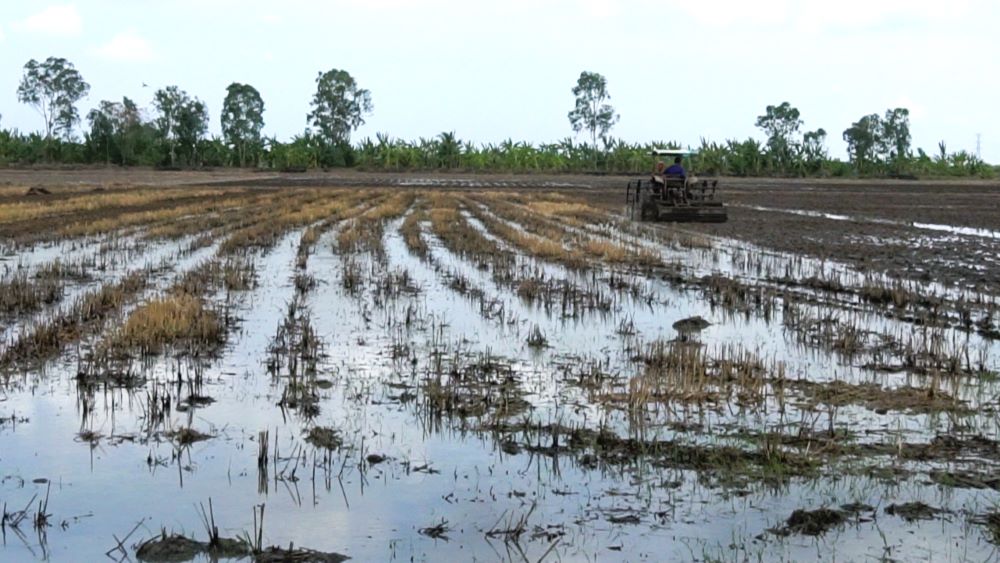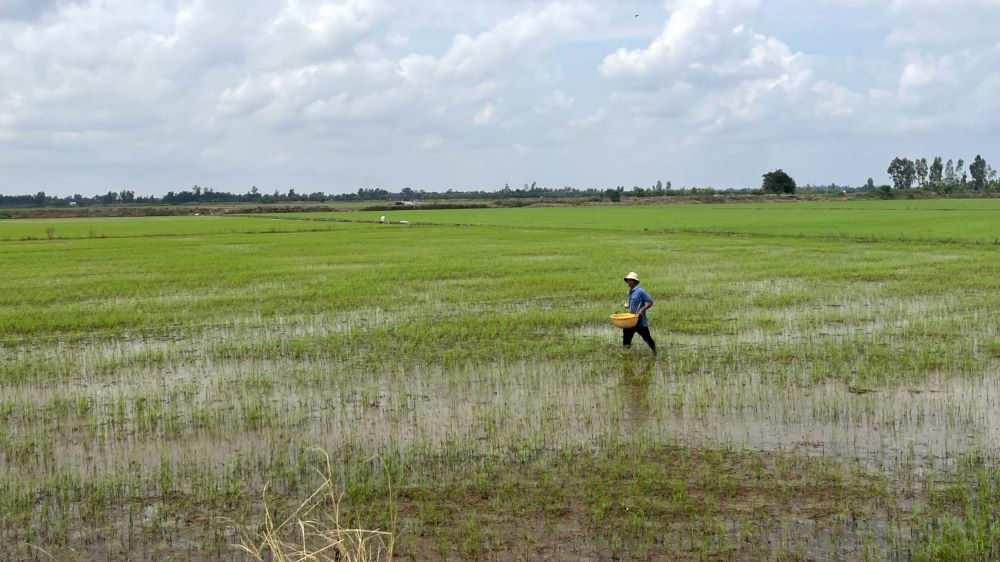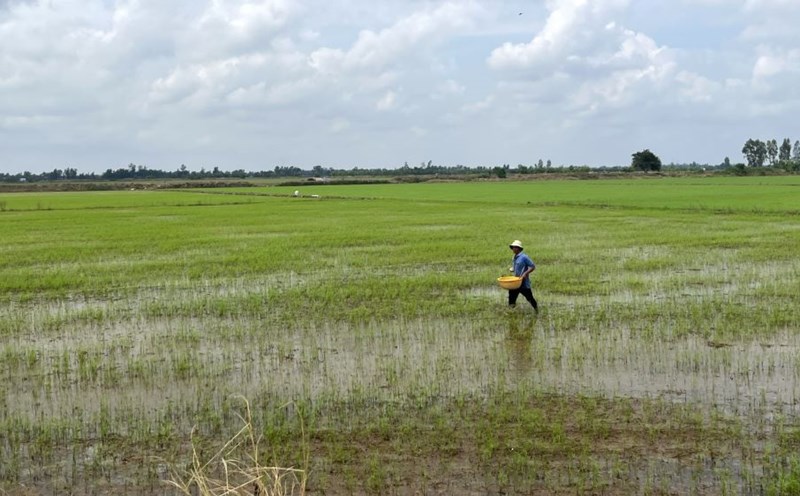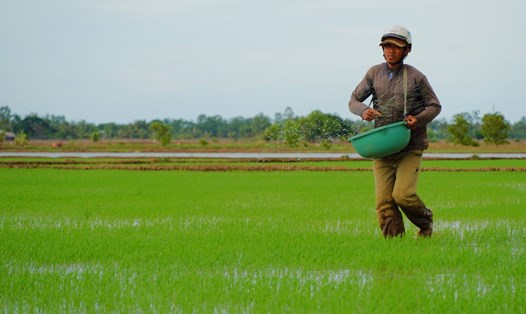At this time, farmers in the West are busy working in the fields, preparing to sow rice for the 2024-2025 winter-spring rice crop.
According to many farmers, due to the impact of bad weather, frequent thunderstorms and high tides have significantly affected rice cultivation. This has also led to increased production costs compared to the same period last year.

In Hau Giang, Mr. Nguyen Van Tu (57 years old, Phung Hiep district) spent more than 10 million VND on farming, water pumps, and storing rice seeds. This amount is about 2 million VND higher than last year's crop.
"This year the rainy season is long, so early sowing will reduce the chance of rice germination, and if it is long, the harvest time will encounter drought and salinity. To prevent a second sowing, I bought an additional 100 kg of rice seeds, gasoline to pump water, and money for plowing, etc., making this crop's production costs quite high," said Mr. Tu.
Although production costs have increased, Mr. Tu is still willing to invest because this is considered an important rice crop of the year due to its high yield. Along with that, rice prices remain stable, so post-harvest profits will increase.
In Can Tho City, after planting 1 hectare of rice, Mr. Nguyen Van Mai also spent a few million more VND to buy gasoline and oil, and stayed in the field to pump water to prevent flooding due to rain and rising water levels.
"The newly sown rice is still weak. If there is heavy rain and we don't have time to pump out the water, the damage will be great. Compared to investing more money to buy rice seeds and spending more time sowing and replanting, which will cost more, I try to visit the fields and monitor them to save the rice in time," said Mr. Mai.
According to the Department of Agriculture and Rural Development of Can Tho City, the city plans to plant 72,100 hectares of rice in the 2024-2025 winter-spring crop. The first sowing season is expected to be from November 3 to 9 and the second sowing season will be from November 25 to December 1.
In Hau Giang, according to the plan, in the 2024-2025 winter-spring rice crop, Hau Giang strives to reach an area of 73,500 hectares, with an estimated output of about 552,320 tons.
For areas with closed dykes and complete drainage pumping systems, ensuring to avoid the impact of high tides in the last months of the year or areas at risk of saltwater intrusion, farmers in Hau Giang province will sow the first batch; the second and third batches for the main winter-spring rice crop; low-lying areas where flood waters recede slowly every year must sow late.

To minimize damage caused by storms, high tides, and floods, the local agricultural sector recommends that farmers comply with the sowing schedule, proactively and closely monitor developments and forecasts of rain and floods to promptly respond to unusual developments; promptly organize repairs and reinforcement of dikes, embankments, and structures at risk of incidents or showing signs of being unsafe.
In addition, proactively operate irrigation works to effectively prevent and combat flooding, serve production, people's lives and ensure safety of works...
According to the National Center for Hydro-Meteorological Forecasting, from October to December 2024, the ENSO phenomenon is likely to transition to La Nina state with a probability of 60 - 70%. The rainy season in the South may end later than usual (around the second half of December 2024).











